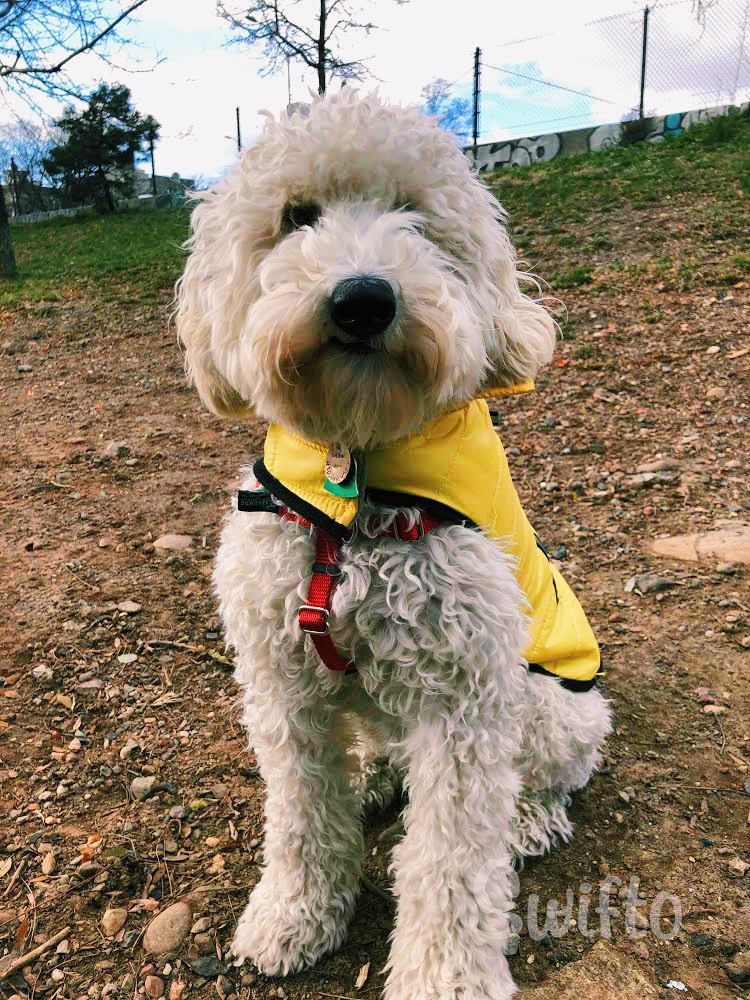
Traveling is a huge part of our lives, and getting there is only part of the adventure. Air planes have undeniably made our lives easier, bringing us closer to the world outside of our apartment. Millions of people every year pack their bags and their best friends for air travel. The information in this article can help you decide if flying with your dog is a realistic option for both of you. Make your dog’s safety and comfort a priority in traveling if the pup must go along for the ride.
For starters, check with your airline company and your airport. Most American airline companies have a few options and strictly enforce restrictions for allowing dogs to fly on their aircrafts. Check websites and call customer service for specific questions and to confirm the information you see online. Remember that online information may be outdated and should be confirmed before you make your plans. Airports will have certain regulations for traveling with pets, too. Many airports have a pet potty area outside or by the entrance that you should visit before heading through security. Once inside, comply with all requests of the security officials and have your boarding information and identification easily accessible. Dogs will have to be placed in a pet carrier or securely leashed as you move through the airport. At security checkpoints, your hands may be swabbed for explosive material traces, and your dog will have to either walk or be carried through the scanners. Do not try to put your dog through the X-ray scanner, but be prepared to send the empty carrier through, along with your personal belongings.
You have a few options for flying with your dog. Most airlines allow pets onboard in the cargo or as a carry on in the cabin. Consider what option will work best for you and will be most comfortable for your dog. Dogs can be taken on flights as cargo, but can become traumatized by the sound and commotion. Many airlines will actually use medication to calm your dog during the flight if he or she becomes too panicked. This is not ideal for many pet parents, and they prefer avoiding this situation by not flying with the dog altogether. If your choose to board your dog as cargo, he or she will have to be in a kennel that is TSA-approved, dropped off and picked up in specific locations, and you will have to pay an additional fee. Make sure the kennel is the correct size for your dog and complies with guidelines. Not all kennel sizes can be flown on all aircrafts, so make sure that your flight will allow your kennel size. Restrictions can include certain breeds, the age and health of a dog, and your dog’s size. Most commercial airlines have extra restrictions on breeds known to have hereditary respiratory issues. These breeds are usually required to be held in larger kennels with more ventilation; some airlines won’t fly these breeds at all. They include most types of Bulldogs, Boxers, Pugs, Shar-Peis, Shih Tzus, and Mastiffs. These breeds in particular are prone to breathing problems and overheating, making it a hazard for them to travel in kennels for long periods of time. Be sure to give all of your dog’s information including age, weight, breed, and medical concerns when talking to your airline. Some airlines will also require a veterinarian’s documentation of the dog’s health prior to boarding. If you have specific concerns about where your dog will be or how he or she will be cared for, talk to your airline or check with TSA (Transportation Security Administration).
Most airlines do allow dogs as carry ons, however they have restrictions as well. Frequently, airlines require the dog’s kennel to fit under the seat which indicates the size requirements of the dog as well. Unless your dog is a registered service animal or emotional support animal, the dog will have to usually be under fifteen pounds for this option. When considering flying options, research destination requirements as well, especially if flying internationally. Many countries have strict regulations on animals which can cause problems for your trip.
So, should you take your dog on a flight? Once you’ve established if you can and what option applies best to your dog’s size, you have one more thing to consider –your dog’s temperament. If you have a dog who gets nervous, doesn’t do well with noises or new people, has a medical condition, or is very young or very old, you might want to look into other transportation methods. Your dog’s safety and comfort should play a key factor in planning a trip. If you know your dog is going to be upset in the airport or on the airplane, this might not be an option for your dog. Check with a veterinarian to see if you have other choices for comfort, and check online to find back-up travel options. After considering the possibilities, if you find that taking your dog on a plane is a safe and possible option for you, don’t forget the leash, a toy, and some treats for when you land!
For more information on specific airlines, try their websites linked below:

